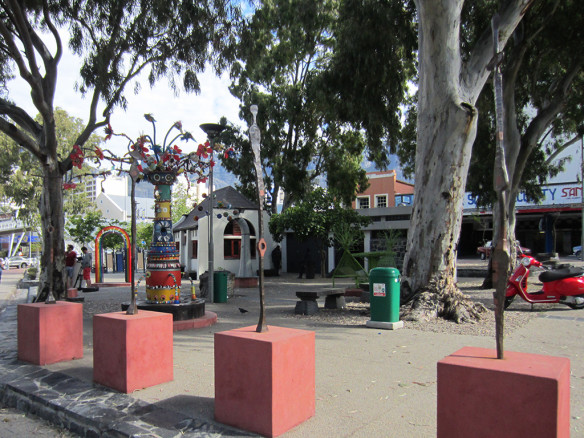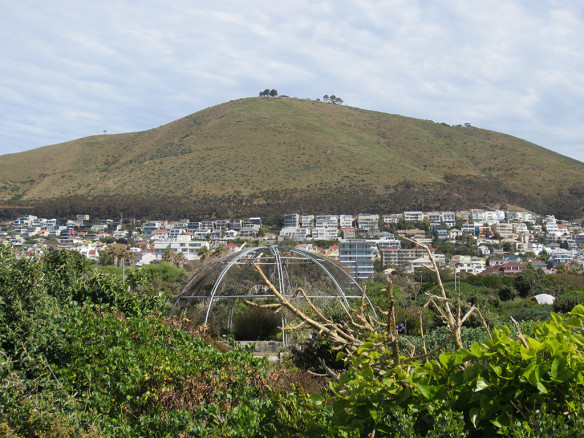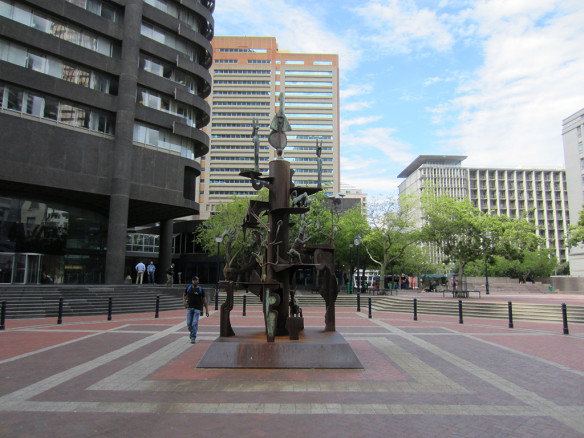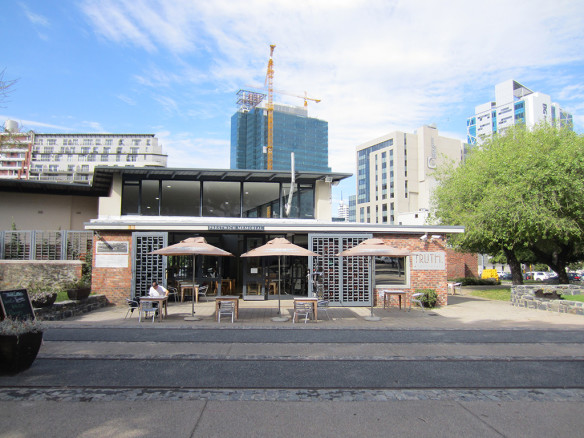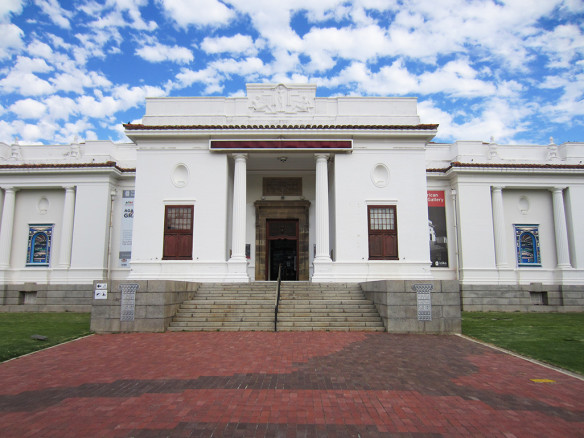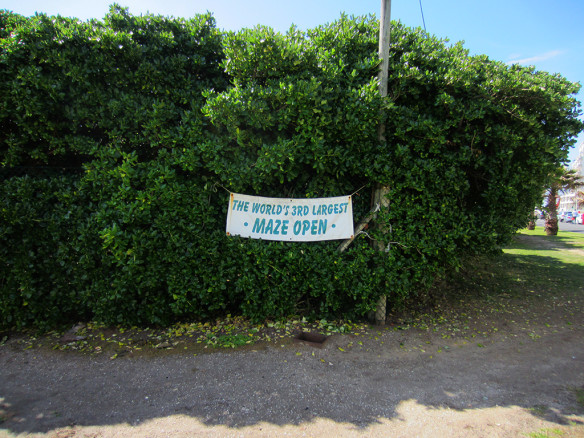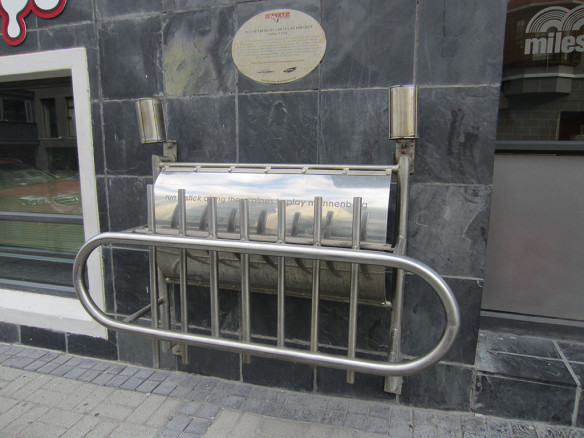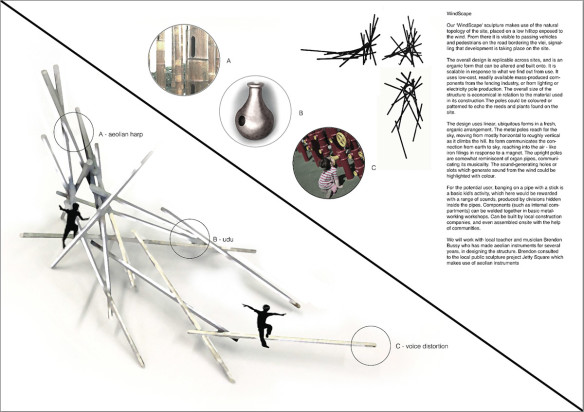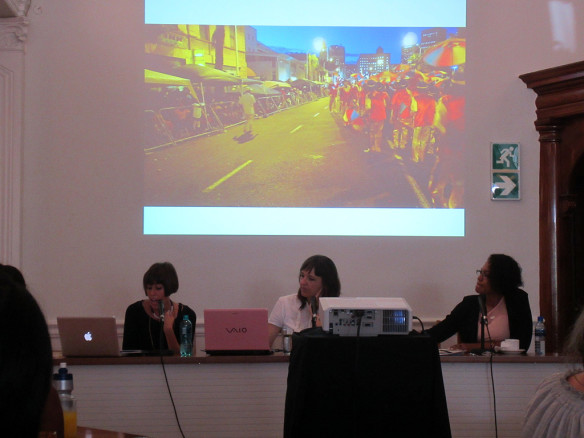
Oddveig Nicole Sarmiento and Rike Sitas, Jenny Fatou-Mbaye (chairing) during their presentation at ‘Thinking the City’
Last week, from Tues 12 – Fri 15 March, the Public Culture City Lab at ACC, of which I am a part, staged a series of panel discussions around notions of art and culture in public space, and the ‘creative city’. The series, ‘Thinking the City’, was intended to complement the annual event series ‘Infecting the City‘, which hosts creative projects in public space in Cape Town over a week.
Cape Town has a long history of public art and culture, and has more recently embraced the notion of a ‘creative city’. This is an exciting prospect for creative practitioners, yet the question of ‘creative city for whom?’ keeps bubbling to the surface of public debate, as different interest groups lay claim to the creative expression in, and of, public space. Thinking the City will contribute to the Infecting the City programme by unpacking a series of examples and contested territories related to cultural practice in the city, in order to foster a more critical dialogue about creative practice in public space. It will comprise four presentation and discussion sessions.
www.gipca.uct.ac.za/creative-practice-in-public-space-explored-at-thinking-the-city
The panel I contributed to, alongside Jenny Fatou-Mbaye, with Ismail Farouk chairing, was titled ‘Design and the Creative City: the creative city for whom?’. I looked at a number of creative art/design interventions in Cape Town, asking who they catered to, and raised the idea that the terms ‘public’ and ‘community’ can sometimes be in tension with each other in such projects.
GIPCA has uploaded video documentation of the panel, below. Unfortunately my presentation slides are not included in the video, but you could download my presentation as a pdf and view the images along with the video – design and the creative city.pdf
Thinking the City 2013 – Design and the creative city: the creative city for whom? – 13 March 2013 from GIPCA@UCT on Vimeo.

